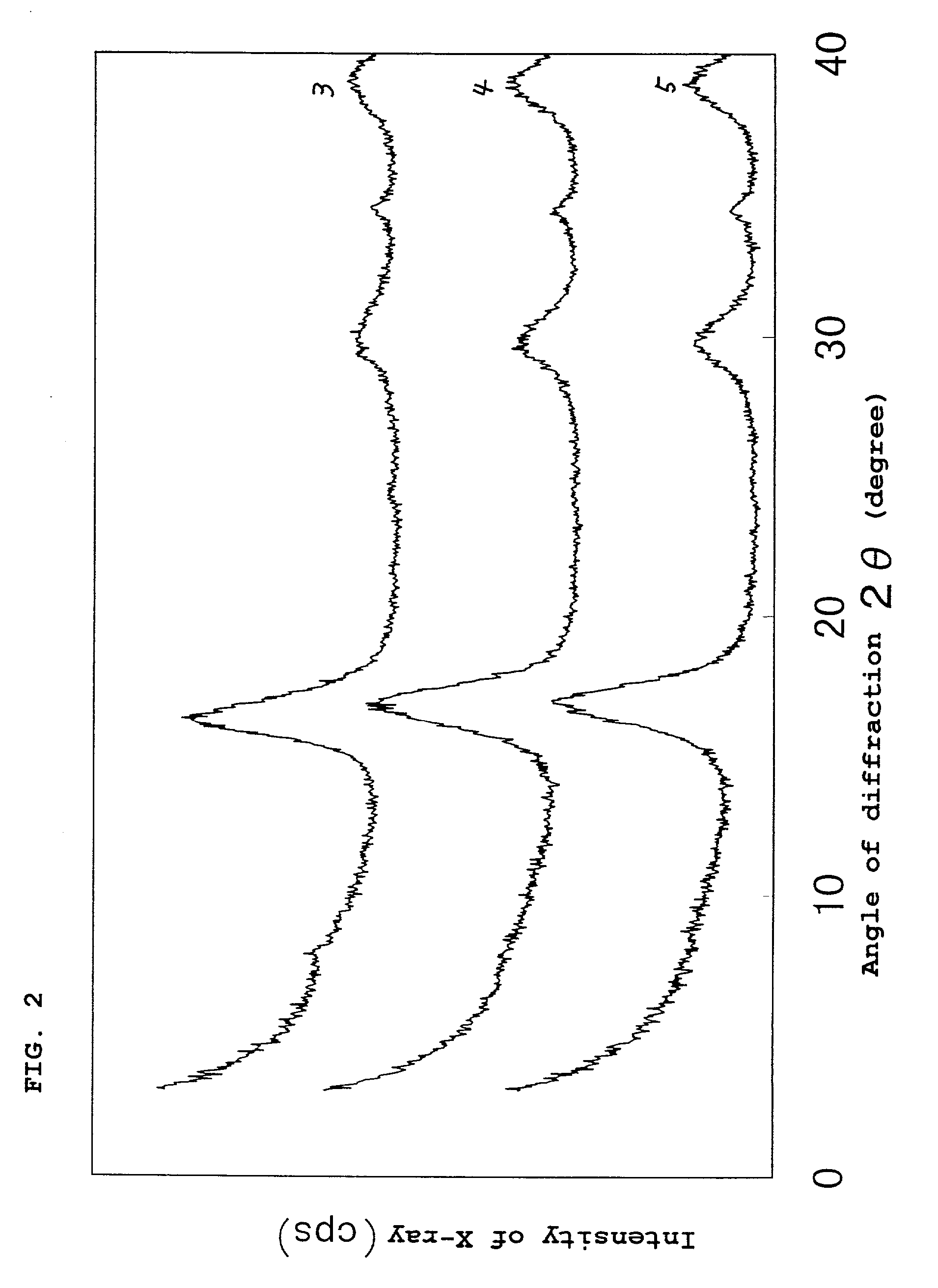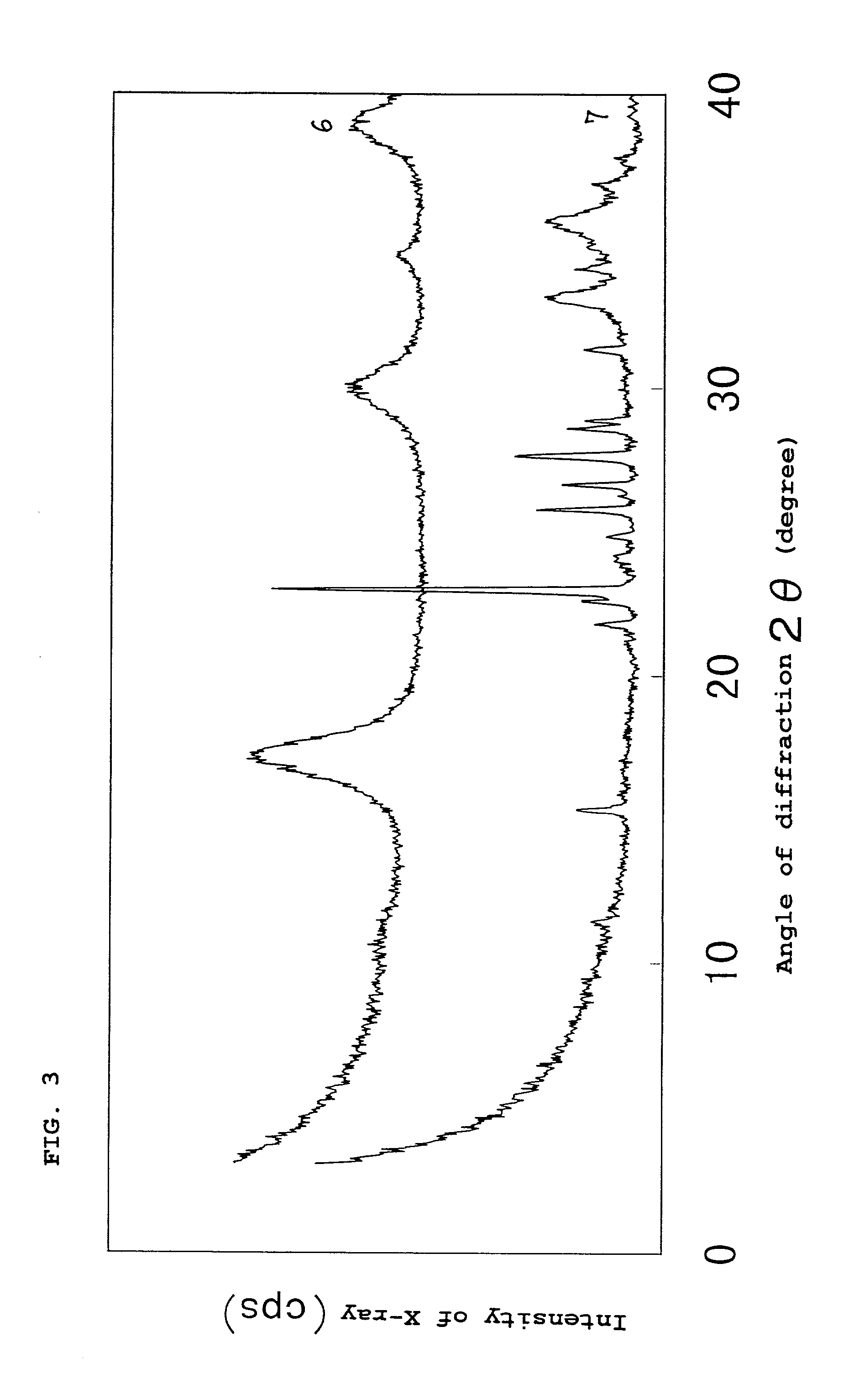Iron sulfides, processes for producing the same, iron sulfide mixture, heavy metal treating agent, and method of treating with the agent
a technology of iron sulfide and process, applied in the field of iron sulfide, processes for producing the same, iron sulfide mixture, heavy metal treating agent, and method of treating with the agent, can solve the problems of reducing the ability of this iron sulfide to treat heavy metals readily, general difficulty in handling solutions, and sulfide having amackinawite structur
- Summary
- Abstract
- Description
- Claims
- Application Information
AI Technical Summary
Benefits of technology
Problems solved by technology
Method used
Image
Examples
example 1
[0097] An aqueous iron(II) chloride solution (0.5 mol / liter) and an aqueous sodium sulfide solution (1.0 mol / liter) were continuously introduced with stirring into a stainless-steel vessel for continuous reaction having an effective capacity of 750 ml at rates of 500 ml / hr and 250 ml / hr, respectively, while keeping the vessel at 25.degree. C. Thus, an iron sulfide slurry was prepared.
[0098] Into a glass reactor having a capacity of 2 liters was introduced 1,000 ml of the iron sulfide slurry obtained. Thereto was added 83 mmol of calcium chloride with stirring. Furthermore, 48% aqueous NaOH solution was added to adjust the slurry pH to 12.8. This slurry was then aged by continuously stirring it for 60 minutes. The slurry obtained after the aging was filtered, and the obtained cake was washed, dried, and then pulverized to obtain an iron sulfide powder. X-ray diffractometry revealed that the iron sulfide powder obtained had a mackinawite structure. The X-ray diffraction chart obtained...
example 2
[0100] An iron sulfide powder was obtained by conducting completely the same procedure as in Example 1, except that the slurry pH was adjusted to 11.7. X-ray diffractometry revealed that the iron sulfide powder obtained had a mackinawite structure. The X-ray diffraction chart obtained is shown in FIG. 2. Analysis for composition determination revealed that the molar proportions of the respective components were represented by FeCa.sub.0.073Na.sub.0.032S.sub.0.99.
[0101] Subsequently, part of the iron sulfide powder obtained was placed in a thermo-hygrostatic chamber having a temperature of 70.degree. C. and a relative humidity of 70% and allowed to stand therein for 1 day to conduct a durability test. X-ray diffractometry revealed that the powder which had undergone the durability test had a mackinawite structure and slight peaks attributable to sulfur, which is a product of decomposition of iron sulfide, were observed. The proportion of the residual iron sulfide was calculated from ...
example 3
[0102] An iron sulfide powder was obtained by conducting completely the same procedure as in Example 1, except that the slurry pH was adjusted to 10.3. X-ray diffractometry revealed that the iron sulfide powder obtained had a mackinawite structure. The X-ray diffraction chart obtained is shown in FIG. 2. Analysis for composition determination revealed that the molar proportions of the respective components were represented by FeCa.sub.0.035Na.sub.0.077S.sub.0.99.
[0103] Subsequently, part of the iron sulfide powder obtained was placed in a thermo-hygrostatic chamber having a temperature of 70.degree. C. and a relative humidity of 70% and allowed to stand therein for 1 day to conduct a durability test. As a result of the analysis by X-ray diffractometry of the powder which had undergone the durability test, peaks attributable to sulfur, which is a product of decomposition of iron sulfide, were observed besides peaks attributable to mackinawite iron sulfide. The proportion of the resid...
PUM
| Property | Measurement | Unit |
|---|---|---|
| Current | aaaaa | aaaaa |
| Current | aaaaa | aaaaa |
| Fraction | aaaaa | aaaaa |
Abstract
Description
Claims
Application Information
 Login to View More
Login to View More - R&D
- Intellectual Property
- Life Sciences
- Materials
- Tech Scout
- Unparalleled Data Quality
- Higher Quality Content
- 60% Fewer Hallucinations
Browse by: Latest US Patents, China's latest patents, Technical Efficacy Thesaurus, Application Domain, Technology Topic, Popular Technical Reports.
© 2025 PatSnap. All rights reserved.Legal|Privacy policy|Modern Slavery Act Transparency Statement|Sitemap|About US| Contact US: help@patsnap.com



